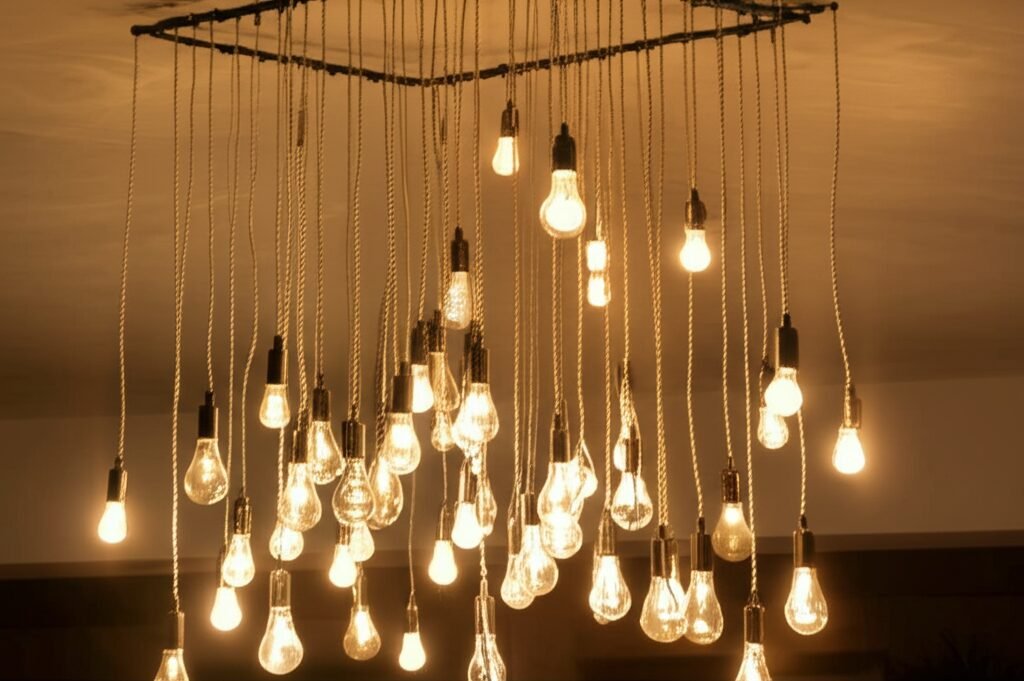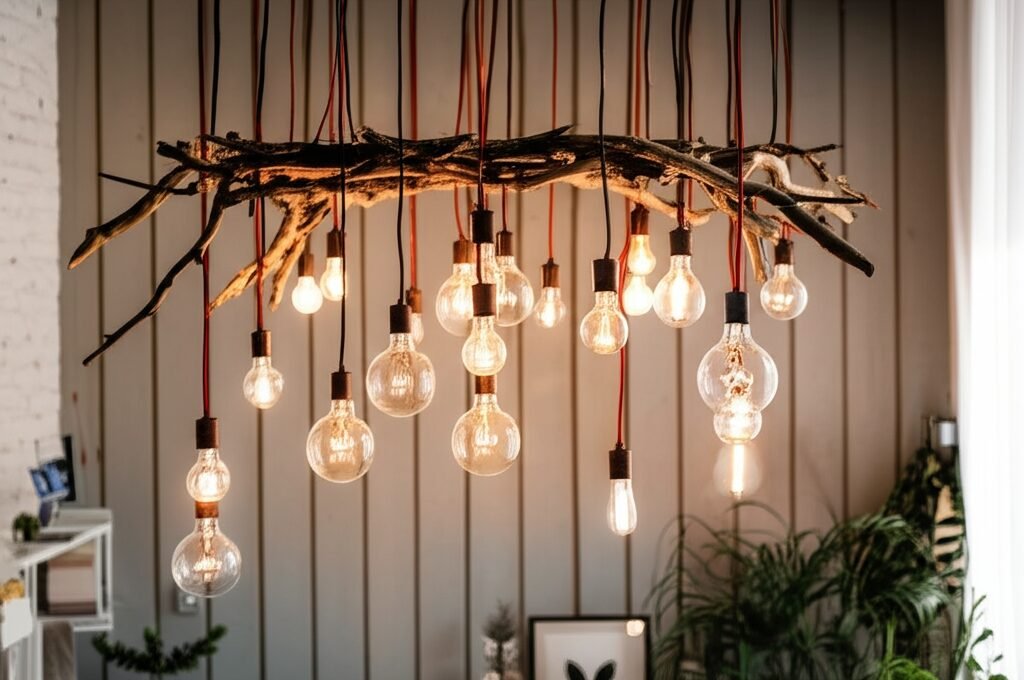Transform Your Space with Custom LED Light Strips
Key Takeaways
| Aspect | Details |
|---|---|
| Cost Range | $15-$200+ depending on length, features, and customization |
| Installation Time | 30 minutes to 3 hours for most residential projects |
| Best Applications | Under-cabinet lighting, accent walls, staircases, entertainment areas |
| Power Consumption | 60-80% less than traditional lighting options |
| Lifespan | 25,000-50,000 hours with quality strips |
| Customization Options | Color changing, dimming, smart controls, cut-to-length sizing |
| Professional vs DIY | Simple installations work for DIY, complex projects need professionals |
What Makes Custom LED Light Strips Worth Your Investment
Custom LED light strips have completely changed how we think about home lighting. Unlike the basic strips you find at big box stores, custom options let you create lighting that matches your exact vision. I’ve been working with these systems for over eight years, and the difference between generic and custom is night and day.
The real magic happens when you can specify exact lengths, colors, and control systems. Generic strips often leave you with awkward gaps or excess length you need to hide. Custom strips eliminate this problem entirely. You measure your space, order exactly what you need, and get professional results.

Most people don’t realize that custom strips can integrate with existing smart home systems. This means your lighting responds to voice commands, adjusts automatically based on time of day, and even syncs with your music or movies. The control options available today would have seemed impossible just five years ago.
How to Choose the Right LED Strip for Your Project
Picking the right LED strip depends on three main factors: where you’re installing it, what you want it to do, and how much you want to spend. The biggest mistake I see people make is buying based on price alone. Cheap strips fail quickly and often produce uneven light that looks terrible.
Density matters more than most people think. Strips with 60 LEDs per meter work fine for basic accent lighting, but you need 120 or even 144 LEDs per meter for smooth, even light without visible dots. This is especially important if you’re using aluminum channels with diffusers.
For kitchens and bathrooms, you need strips rated for moisture. Look for IP65 or IP67 ratings if there’s any chance of water contact. I learned this the hard way when a client’s under-cabinet strips failed after just six months because we used standard strips near their sink.

Color temperature selection separates amateur installations from professional ones. Warm white (2700K-3000K) works best for living areas and bedrooms. Cool white (4000K-5000K) suits kitchens and workspaces. Tunable white strips let you adjust throughout the day, but they cost significantly more.
Consider whether you need addressable strips. These let you control individual LEDs or sections separately, creating amazing effects like mood lighting techniques for clubs. They’re perfect for entertainment areas but overkill for simple accent lighting.
Installation Methods That Actually Work
Professional installation isn’t always necessary, but it depends on your project scope. Simple under-cabinet lighting or accent strips behind a TV? Most homeowners can handle these projects. Complex systems with multiple zones, dimming controls, and smart integration? You probably want professional help.
The mounting surface determines your approach. Drywall installations require proper anchoring, especially for heavier aluminum channels. I always use toggle bolts or find studs when possible. Adhesive-only mounting works for lightweight strips on clean, smooth surfaces, but it’s not reliable long-term.

Power supply placement is critical. These need ventilation and should be accessible for maintenance. I hide them in cabinets, closets, or utility areas whenever possible. Running low-voltage wire is much easier than dealing with line voltage, plus it’s safer for DIY installers.
Cable management separates good installations from great ones. Use cable channels, conduit, or run wires inside walls when possible. Exposed wires always look unprofessional, no matter how nice your LED strips are.
Testing everything before final installation saves hours of troubleshooting later. I connect the entire system temporarily, check all zones and controls, then do the permanent installation. This step-by-step guide to building your own covers the detailed process most people need.
Creating Custom Lighting Zones Throughout Your Home
Different rooms need different lighting approaches. Your kitchen needs bright, functional light for cooking, while your bedroom wants soft, relaxing ambiance. Custom LED strips let you create these different moods with a single system.
Living room accent lighting works best behind entertainment centers, under floating shelves, or along crown molding. The key is indirect lighting that bounces off walls and ceilings. Direct LED strips pointing at seating areas create glare and don’t look professional.
Kitchen applications go beyond basic under-cabinet strips. Toe-kick lighting eliminates dark shadows on the floor. Inside-cabinet lighting makes finding items easier. Display cabinet strips showcase your dishes or collectibles. Each zone should have separate controls for maximum flexibility.

Bedroom lighting should prioritize comfort and functionality. Strips behind headboards create beautiful accent lighting without taking up nightstand space. Under-bed strips provide gentle navigation lighting for nighttime. Closet strips make getting dressed easier.
Bathroom installations require waterproof strips and careful placement. Behind mirrors, around vanities, and in shower niches work well. Avoid placing strips where they’ll get direct water spray, even with high IP ratings. I’ve seen too many “waterproof” strips fail in shower environments.
Staircase lighting improves safety while adding dramatic visual impact. Motion sensors make the system automatic – lights turn on when someone approaches and shut off after they pass. This creating VIP areas with custom lighting concept works great for highlighting architectural features.
Smart Controls and Automation Features
Smart controls transform basic LED strips into sophisticated lighting systems. The simplest option is wifi-enabled controllers that work with phone apps. You can adjust brightness, change colors, and set schedules from anywhere in your home.
Voice control integration with Alexa, Google Assistant, or Siri makes daily use effortless. “Turn on kitchen counter lights” or “Set bedroom lights to 20%” becomes second nature quickly. The convenience factor is huge, especially for frequently used lighting.

Motion sensors add automatic operation that’s perfect for closets, pantries, and hallways. The lights turn on when you enter and shut off after a preset delay. This saves energy and makes the system feel more integrated with your daily routine.
Advanced systems can integrate with home automation platforms like Hubitat, SmartThings, or Home Assistant. This enables complex scenes, scheduling, and integration with other home systems. Your lights can dim automatically when you start watching a movie or turn on gradually in the morning instead of jarring alarm clocks.
Scene programming lets you save specific lighting configurations for different activities. “Dinner party” might set accent lights to warm white at 60%, while “movie night” dims everything except subtle floor lighting. Good controllers can store dozens of custom scenes.
The sound and light integration possibilities are impressive with modern systems. Lights can pulse with music, change colors based on what’s playing, or create immersive experiences for home theaters and entertainment areas.
Cost Analysis and Budget Planning
Custom LED strip projects range from under $100 for simple accent lighting to several thousand dollars for whole-home systems. Understanding cost factors helps you budget appropriately and avoid surprise expenses.
Strip costs vary dramatically based on specifications. Basic single-color strips cost $2-5 per foot. RGB color-changing strips run $5-12 per foot. High-density addressable strips can cost $15-30 per foot. Professional-grade strips with long warranties cost even more but last much longer.
Controllers and power supplies often cost more than people expect. A basic wifi controller might cost $25, while a professional system with multiple zones and advanced features can cost $200-500. Power supplies range from $15 for simple setups to $100+ for complex installations.

Installation costs depend on complexity and local labor rates. Simple plug-and-play installations might cost $50-100 per hour. Complex systems requiring electrical work, wall fishing, and multiple zones can cost $75-150 per hour. Always get detailed quotes that include materials and labor.
Long-term savings justify higher upfront costs. Quality LED strips use 60-80% less energy than equivalent incandescent or halogen lighting. They last 25,000-50,000 hours compared to 1,000-2,000 hours for traditional bulbs. The LED strip market research shows continued cost decreases and efficiency improvements.
DIY installation can save 50-70% on labor costs, but only attempt projects within your skill level. Electrical work should always be done by licensed professionals. The safety tips for DIY lighting covers what you can safely do yourself versus when to call professionals.
Common Installation Mistakes and How to Avoid Them
The biggest mistake is inadequate planning. Measure twice, order once applies especially to custom LED strips. I’ve seen people order strips that are too short, requiring ugly splicing, or too long, creating waste and additional complexity.
Power supply calculations confuse many people. LED strips specify power consumption per foot or meter. Calculate your total length, multiply by power per unit, then add 20% safety margin. Undersized power supplies cause voltage drop, dimming, and premature failure.
Heat management gets overlooked frequently. LED strips generate heat that must be dissipated. Aluminum channels with good thermal contact help significantly. Avoid installing strips in enclosed spaces without ventilation. High-power strips may need active cooling in extreme applications.

Color temperature mixing creates unpleasant lighting effects. Don’t combine warm and cool white strips in the same area unless you want the contrast. Stick to consistent color temperatures within each room or zone.
Cutting strips in wrong locations ruins them. Most strips have designated cut points every few inches. Cutting between these points destroys the circuit. Mark cut points before installation and double-check before cutting.
Poor wire connections cause most failures. Use proper connectors designed for your strip type. Solder connections when possible, or use high-quality mechanical connectors. Tape connections fail over time and create fire hazards.
The common mistakes to avoid guide covers detailed prevention strategies that can save you hundreds in replacement costs and frustration.
Future Trends and Technology Developments
The LED strip industry continues advancing rapidly. 2025 LED market growth areas highlight several exciting developments that will affect custom installations.
Efficiency improvements continue annually. New LED chips produce more light while using less power. Strips that needed 20 watts per foot five years ago now provide the same output with 12-15 watts. This reduces power supply requirements and heat generation.
Color quality keeps improving with higher CRI ratings. Premium strips now offer CRI 95+ that makes colors look natural and vibrant. This matters especially for retail displays, art lighting, and areas where color accuracy is important.

Integration with AI and machine learning enables adaptive lighting systems. Your lights can learn your preferences, adjust automatically based on weather or time of year, and optimize energy usage without manual programming.
Wireless control systems are becoming more reliable and feature-rich. Mesh networking ensures reliable communication throughout large homes. Battery-powered controllers eliminate the need for low-voltage control wiring in many applications.
The flex LED strips market shows increasing demand for bendable and shapeable strips. These enable curved installations, complex geometries, and artistic applications that weren’t possible with rigid strips.
Health-focused lighting gains popularity as people understand circadian rhythm effects. Tunable white strips that automatically adjust color temperature throughout the day support natural sleep patterns and overall wellbeing.
Frequently Asked Questions
How long do custom LED light strips typically last?
Quality custom LED strips last 25,000-50,000 hours with proper installation and power management. This translates to 10-20 years of normal residential use. Cheap strips may fail within 2-3 years.
Can I cut LED strips to custom lengths?
Yes, most LED strips have designated cut points every 2-4 inches marked with scissors symbols. Always cut at these points to avoid damaging the circuit. Custom manufacturers can provide exact lengths to minimize cutting.
Do LED strips work with dimmer switches?
Standard wall dimmers usually don’t work with LED strips. You need LED-compatible controllers with dimming functions. Some strips require PWM dimming, while others work with 0-10V or TRIAC dimmers.
How much power do LED strips actually use?
LED strips typically consume 3-15 watts per foot depending on density and brightness. A 10-foot kitchen cabinet installation might use 40-60 watts total, compared to 200-300 watts for equivalent incandescent under-cabinet lighting.
Can LED strips be installed outdoors?
Yes, with proper weatherproof ratings. Look for IP65 or IP67 ratings for outdoor use. Outdoor installations need UV-resistant materials and proper drainage. Marine-grade strips work best in harsh weather conditions.
What’s the difference between RGB and RGBW strips?
RGB strips combine red, green, and blue LEDs to create colors but can’t produce pure white light. RGBW strips add dedicated white LEDs for better white light quality and wider color range.
Do I need an electrician for LED strip installation?
Simple plug-in installations don’t require an electrician. Hardwired installations, new circuits, or line voltage connections should be done by licensed electricians. Low-voltage DC strips are generally safe for DIY installation.
How do I prevent voltage drop in long LED strip runs?
Use appropriately sized wire, inject power at multiple points for runs over 16 feet, or use constant current drivers. Voltage drop causes dimming and color shifting at the end of long runs.







